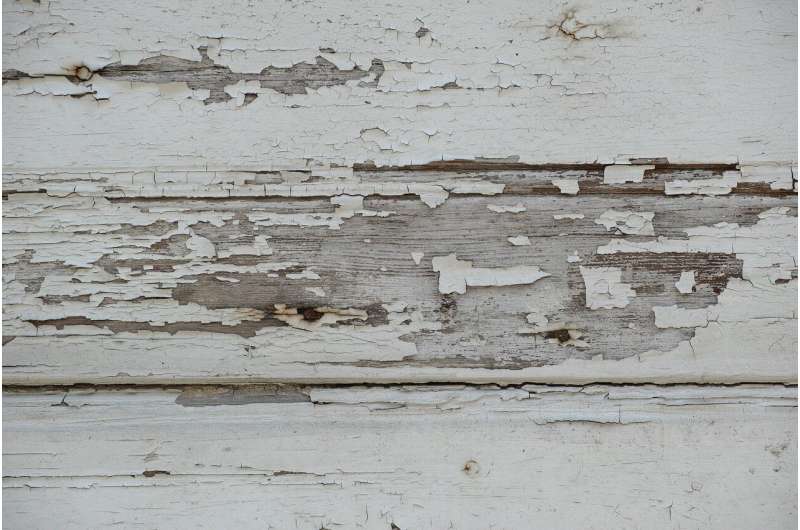Lead levels in preschool kids lower, but vigilance is needed

Researchers led by Dr. Christos Symeonides, a paediatrician and post-graduate research scholar from the Murdoch Children's Research Institute and the Royal Children's Hospital Melbourne, measured the blood lead levels in 523 of 708 children appraised in the Barwon Infant Study preschool review.
They found that the median blood lead level was 0.8 μg/dL; the geometric mean blood lead level after propensity weighting was 0.97 μg/dL. Children in houses 50 or more years old had higher blood lead levels—"this association is consistent with the restriction of the lead content of house paint since 1965"—as did children of families with lower household income and those living closer to the Point Henry aluminum smelter, which operated between 1962 and 2015. Associations between hygiene factors and lead levels were evident only for children living in older homes.
Symeonides and colleagues compared blood lead levels in this study with other studies—including recent surveys of Australian children in Mount Isa and Port Pirie—and concluded: "Blood lead levels in our pre- school children were lower than in previous Australian surveys and recent surveys in areas at risk of higher exposure. "
"None of the children in our study had blood levels exceeding 5 μg/dL, the threshold for notification and investigation recommended by the National Health and Medical Research Council; indeed, the highest level measured was 3.7 μg/dL, suggesting that regulatory measures for reducing the lead exposure of children in the general Australian population have been effective," Symeonides and colleagues wrote.
"Our findings support current recommendations for reducing exposure of children to lead in the home, including reducing the risks connected with sand contamination, and lead-containing paint," they wrote.
"Our subgroup finding that more frequent showering or bathing by children in older houses was associated with lower blood lead levels may suggest that such washing reduces exposure, but confirmatory studies are required."
Symeonides and colleagues concluded that "as no safe limit of exposure for children has been established, minimizing exposure to lead remains essential".
"Blood lead levels in this sample of children were low in comparison with previous Australian surveys, but recommendations regarding minimizing exposure to historical lead sources remain appropriate.
"The relationship between socio-economic disadvantage and higher blood lead levels, although perhaps unsurprising, is nevertheless worrying from both the health and social justice perspectives."
More information: Christos Symeonides et al. Preschool child blood lead levels in a population‐derived Australian birth cohort: the Barwon Infant Study, Medical Journal of Australia (2019). DOI: 10.5694/mja2.50427





















